Impressive Glasgow Cathedral is one of the few cathedrals in Scotland to survive the 16th-century Protestant Reformation mobs nearly intact. The building is huge and seems to go on forever. On a day-trip to Glasgow from Greenock, we toured the cathedral, took in the city views from the adjacent Necropolis, and spent several hours walking through the historic city of Glasgow with its notable architecture and modern murals.
Trip highlights from July 16th follow. Click any image for a larger view, or click the position to view the location on a map. And a live map of our current route and most recent log entries always is available at http://mvdirona.com/maps
 |
Queen St Station
Position: -4 15.09, 55 51.73
At the Queen St. train station. We love train trips, but haven’t been on one since Karunda Scenic Railway in Cairns, Australia.
|
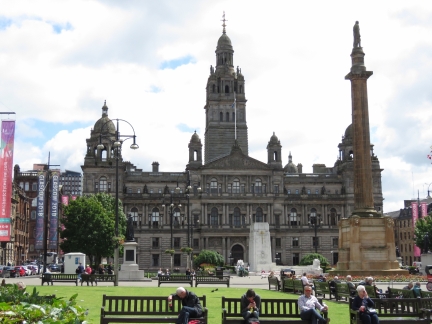 |
George Square
Position: -4 15.06, 55 51.68
The Glasgow City Chambers in George Square. The square was laid out in 1781 and the City Chambers first stone was laid a century later in 1883. Queen Street train station was opened in 1842 at the northwest corner. Statues and monuments surround the square, dedicated to famous Scots such as Sir Walter Scott (the tall column on the right) and Robert Burns and royalty such as Queen Victoria.
|
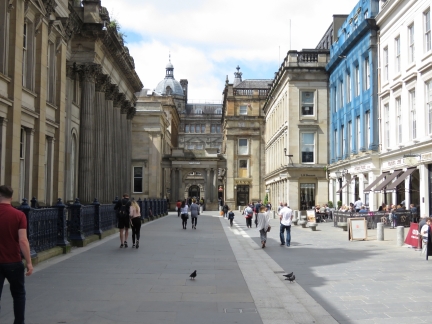 |
Royal Exchange Square
Position: -4 15.11, 55 51.61
Looking west from Queen Street along Royal Exchange Square that dates from the late 1700’s. The Glasgow Museum of Modern Art is on the left.
|
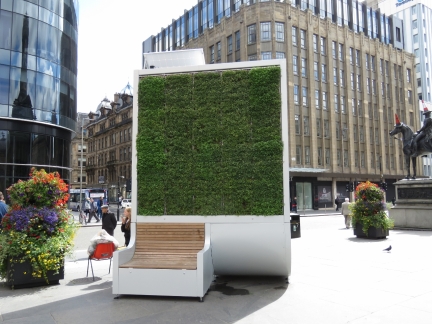 |
CityTree
Position: -4 15.09, 55 51.63
We saw a video about the CityTree a while back and saw one in Glasgow. The invention of Berlin-based Green City Solutions, the CityTree has the environmental benefit of 275 trees. But it isn’t actually a tree at all, rather it’s a moss culture.
|
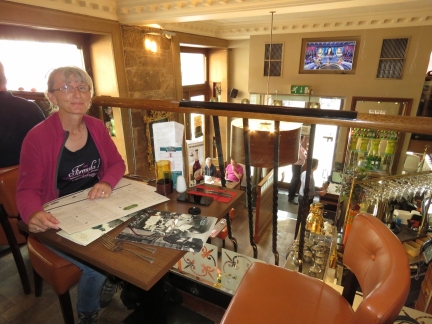 |
La Vita
Position: -4 15.10, 55 51.65
An excellent pizza lunch on the second floor balcony at La Vita Pizzeria.
|
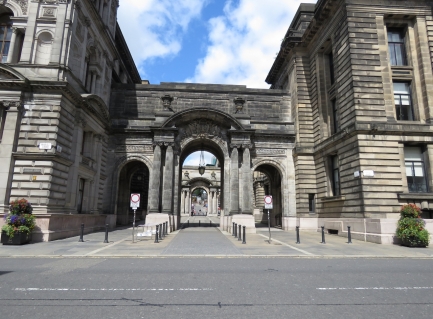 |
City Chambers
Position: -4 14.87, 55 51.61
Looking through the double arches on the other side of the City Chambers from George Square.
|
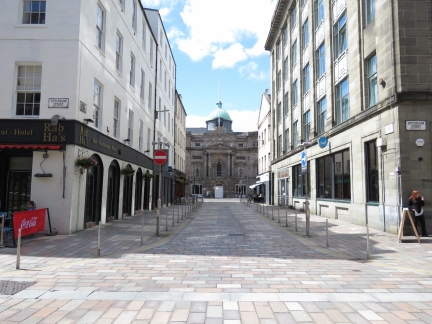 |
Trades Hall of Glasgow
Position: -4 14.87, 55 51.55
Looking down Garth Street to the Trades Hall of Glasgow, built in 1791-1794. Since it’s completion the hall has housed The Trades House of Glasgow, established in 1605 and now a registered charity, that supports causes and individuals throughout the city.
|
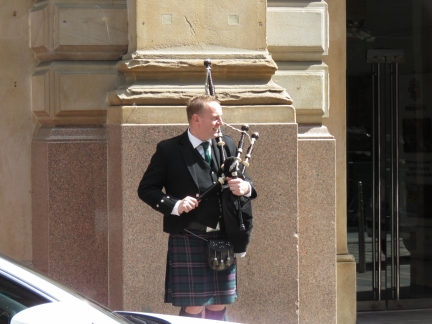 |
Piper
Position: -4 14.71, 55 51.55
A piper welcoming guests to a Glasgow wedding.
|
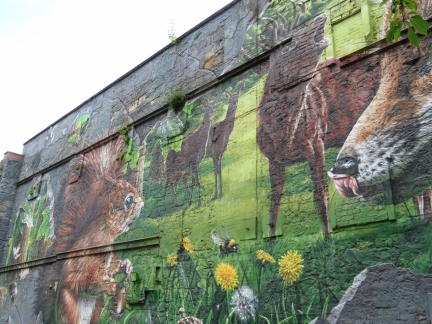 |
Fellow Glasgow Residents
Position: -4 14.64, 55 51.55
Glasgow has some amazing murals. The Glasgow City Council has encourage street art to promote the city center, reduce the visual impact of land and building vacancies and attract visitors. This is called “Fellow Glasgow Residents” by Smug (Sam Bates) and depicts the wildlife in Glasgow’s parks.
|
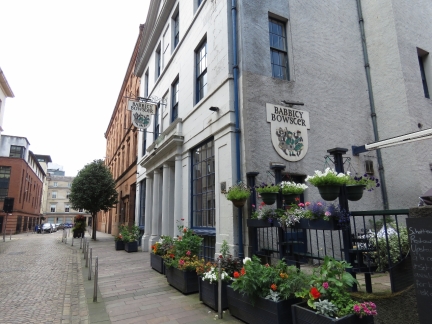 |
Babbity Bowster
Position: -4 14.51, 55 51.52
The patio at the Babbity Bowster looked like a great place to stop for a drink or a meal. And we loved the name.
|
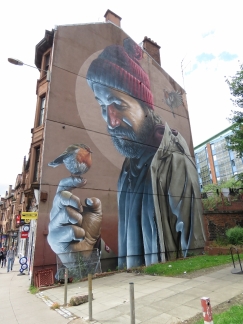 |
St Mungo at High Street
Position: -4 14.26, 55 51.66
Another impressive mural by Smug (Sam Bates), this one depicts a modern-day St. Mungo who brought a robin back to life. St. Mungo is the founder and patron saint of the city of Glasgow.
|
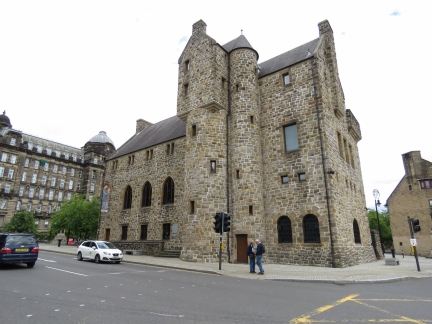 |
Museum
Position: -4 14.20, 55 51.74
The St. Mungo Museum of Religious Life and Art in Cathedral Square. The building is of modern construction emulating the medieval style to blend in with the nearby Provand’s Lordship House.
|
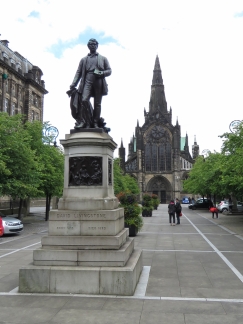 |
Livingstone
Position: -4 14.20, 55 51.76
A statue commemorating Scottish doctor, missionary and explorer David Livingstone (1813-73), with Glasgow Cathedral in the background. Livingstone is known for his exploits in Africa. After Livingstone had been incommunicado for several years while searching for the source of the Nile River, the New York Herald dispatched journalist and explorer Henry Morton Stanley to find him. Upon locating Livingstone, the only white person for hundreds of miles, Stanley issued the now-famous dry-humour greeting “Dr Livingstone, I presume?”. The statue originally was erected in George Square in 1879, then moved to a different location Cathedral Square in 1960 and to it’s present location a few yards away in 1990.
|
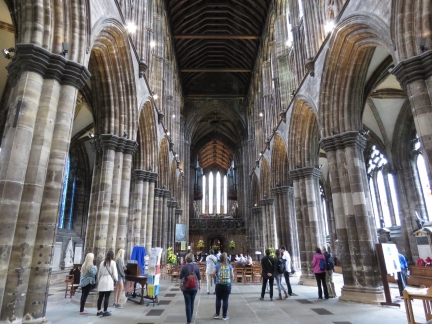 |
Glasgow Cathedral
Position: -4 14.10, 55 51.78
Inside impressive Glasgow Cathedral, one of the few cathedrals in Scotland to survive the 16th-century Protestant Reformation mobs nearly intact. The building is huge and seems to go on forever. Most of the structure dates from the 15th century and the stone stairs leading down to the tomb of St. Mungo seem to bear centuries of wear. The choir was practicing when we were there, giving a demonstration of the cathedral’s wonderful acoustics.
|
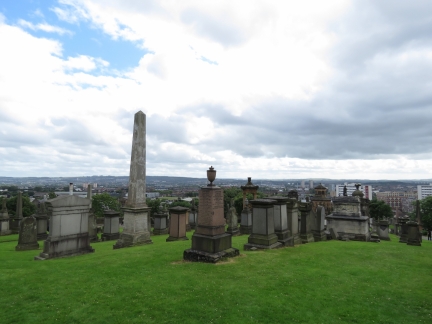 |
Necropolis
Position: -4 13.89, 55 51.78
The Glasgow Necropolis opened in 1833 after an 1832 law change allowed burial for profit. Fifty thousand people are buried here, a few with monuments and some without headstones, as was typical for the period. Like many Victorian cemeteries, it is laid out like an informal park rather than a grid layout. For a time, most of Glasgow’s prominent citizens were buried here. The hilltop site also has great views over the city.
|
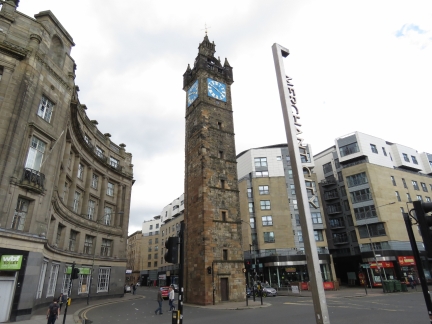 |
Tolbooth Steeple
Position: -4 14.64, 55 51.40
Tolbooth Steeple was built in 1625-1627 as part of a larger building, the Tolbooth, housing the Town Clerk’s office, the council city hall and the city prison. As the city expanded and moved westward, the Tolbooth was abandoned and later demolished, leaving only the tower.
|
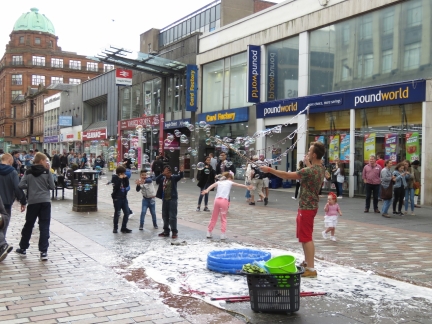 |
Bubbles
Position: -4 15.09, 55 51.46
Street artist generating bubbles to the delight of the children at the pedestrian mall on Argyle Street.
|
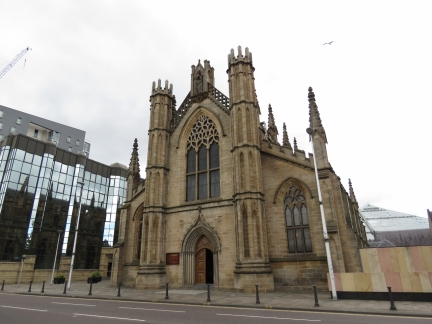 |
Metropolitan Cathedral
Position: -4 15.22, 55 51.31
The Glasgow Metropolitan Cathedral was completed in 1816. This was the first Roman Catholic church built in Glasgow and construction was plagued by vandals hostile to the church. Restrictions on Catholic church design in the 1791 Relief Act meant the church could have no bell or steeple. This law was repealed in 1829.
|
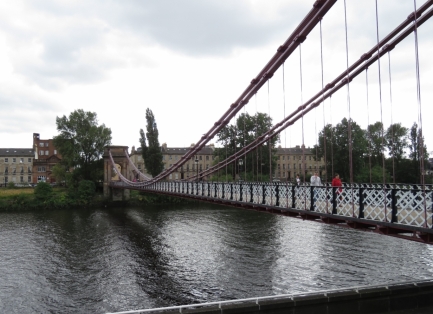 |
River Clyde
Position: -4 15.32, 55 51.34
The Portland Street Suspension Bridge across the River Clyde. The river is a familiar entity to us, mostly from years of reading Marine Accident Investigation Branch (MAIB) reports such as the tragic sinking of the tug Flying Phantom on the river, with the loss of three lives.
|
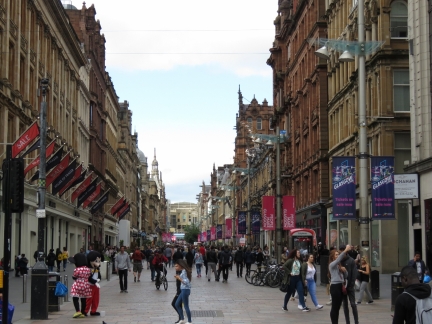 |
Buchanan Street
Position: -4 15.28, 55 51.53
Glasgow has many pedestrian-only streets in the city center. It’s a great city for walking.
|
 |
All Bar One
Position: -4 15.30, 55 51.68
A refreshing pint of cider street-side at All Bar One after several hours of walking.
|
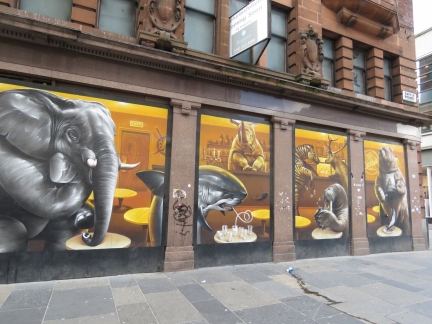 |
Argyle Street Cafe
Position: -4 15.05, 55 51.47
Another Smug mural depicting a surprisingly lifelike cafe scene reminiscent of Richard Scarry books.
|
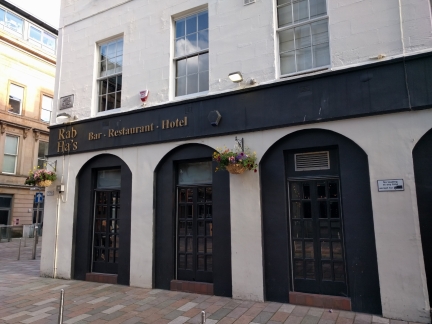 |
Rob Ha’s
Position: -4 14.88, 55 51.55
A good meal at Rob Ha’s pub near Merchant City before taking the train back home.
|
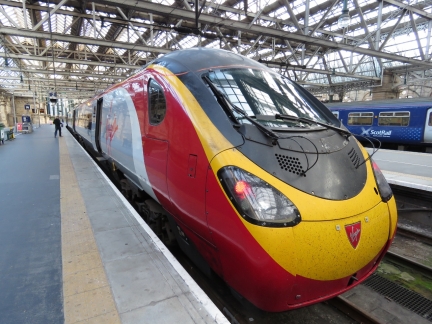 |
Virgin Trains
Position: -4 15.45, 55 51.55
We didn’t know Virgin operated trains. When British Rail was privatized between 1994 and 1997, the Virgin Group created the Virgin Rail Group and successfully bid for two of the rail franchises.
|

|
Click the travel log icon on the left to see these locations on a map, with the complete log of our cruise.
On the map page, clicking on a camera or text icon will display a picture and/or log entry for that location, and clicking on the smaller icons along the route will display latitude, longitude and other navigation data for that location. And a live map of our current route and most recent log entries always is available at http://mvdirona.com/maps. |

If your comment doesn't show up right away, send us email and we'll dredge it out of the spam filter.